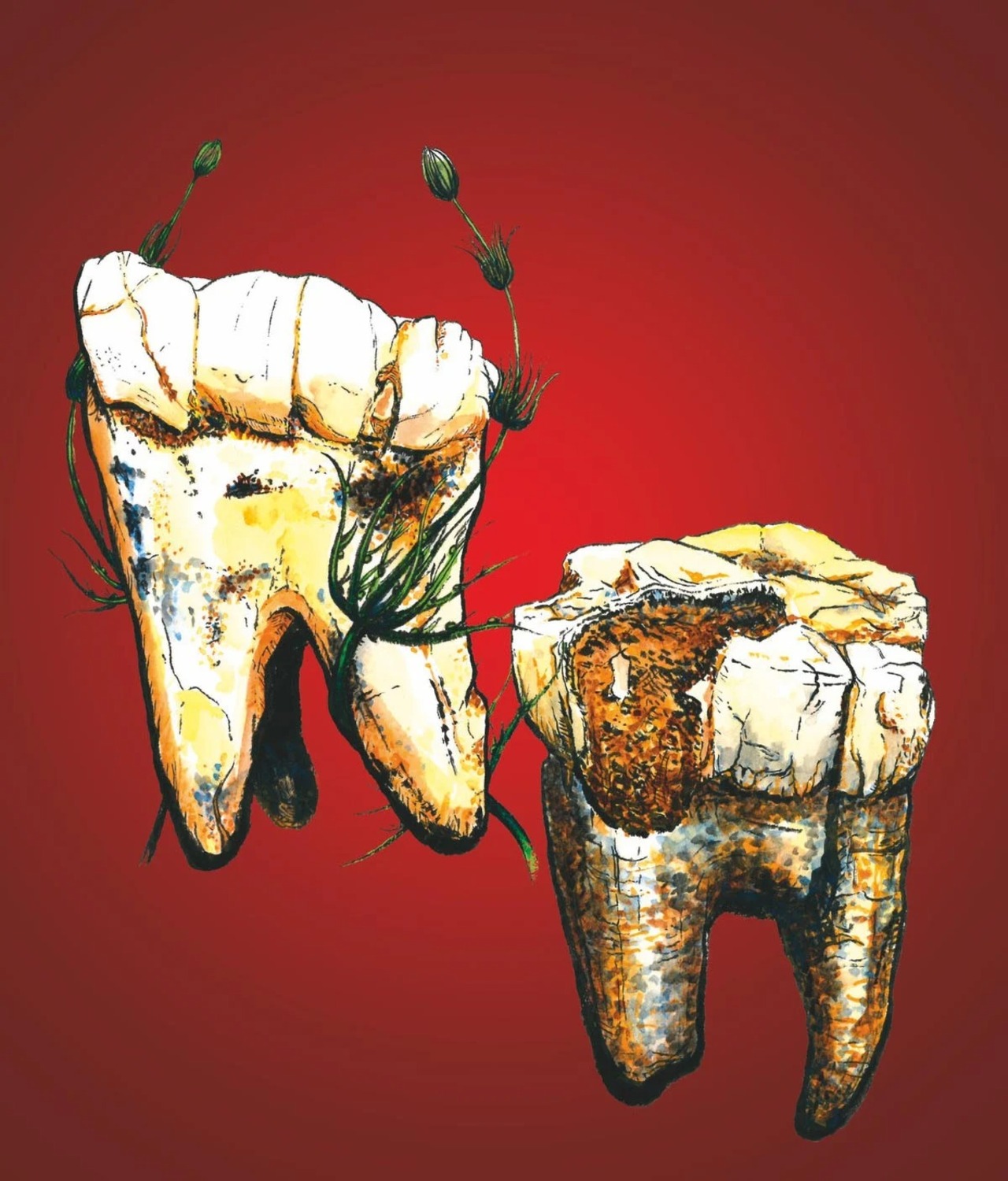
What's Behind Peru's Recent 'Gastronomic Revolution'?
Peruvian-American anthropologist Maria Elena Garcia has studied the relationship between political violence in Peru and its gastronomic revolution.
María Elena García was born in Peru, but when she was just five years old her family moved to Venezuela, then to Puerto Rico, then Mexico City, and eventually to the United States when she was 14.
“That move to the U.S. was perhaps one of the most signifi cant moments in my life,” María Elena García told AL DÍA News in a recent email interview.
It was 1985, the same year that the war in Peru arrived in Lima, the city where she was born and where most of her family lived. That meant she would not be able to return to her homeland to visit her grandparents, aunts, uncles, and cousins in the following years. This new situation made her angry, and also pushed her to ask questions, not only about the war raging in her country, but also about the Quechua origins of her grandfather, who was from Ayacucho — one of the highland departments hardest hit by the violence. That’s why her interests, and eventually her academic work as an anthropologist, turned to Indigeneity, Latin America, and political violence.
In her first book, Making Indigenous Citizens: Identities, Development, and Multicultural Activism in Peru (2005), García, by then with a doctorate in Anthropology from Brown University, examined Indigenous and intercultural politics in Peru in the immediate aftermath of the war between Sendero Luminoso and the state.
In her latest book, Gastropolitics and the Specter of Race: Stories of Capital, Culture, and Coloniality in Peru (2021), García decided to focus on another dimension of Peruvian politics and culture — Peru’s recent “gastronomic revolution.” Why? To explore the intersections of race, species, and capital that reveal links between gastronomy and violence in the Latin American country.
ALPACAS AND GUINEA PIGS
“A few years ago, I started getting more and more interested in thinking about human-nonhuman relations, about Indigenous understandings of other-than-human life, and I started to immerse myself in the field of animal studies. It was in this moment of reading and teaching in animal studies that I began to notice different things in my research trips to Peru.
For example, I began to notice that alpacas and guinea pigs (or cuyes as we call them in Peru) appeared more frequently on menus, especially tourist menus. But it was also how they appeared on the menu that caught my attention: I started to notice the inclusion of dishes like carpaccio de alpaca, or cuy ravioli,” García explained.
This was different from the more traditional cuy served whole, or the way she had eaten alpaca before, with meat she remembered as tough. So, to make carpaccio, the meat had to come from alpacas raised specifically for meat, and perhaps raised in conditions different from more traditional contexts.
“This raised lots of questions for me and I began to explore what I soon realized was a shift toward the intensification of production of these animals,” she recalled.
This was in the mid-2000s or so. García started asking questions, not just about this process, but also about the particular significance of these Andean animals.
“I began to hear more and more about the emergence of novoandina cuisine, the so-called blending of Indigenous products with European techniques, and the importance of the emerging gastronomic boom,” she said.
I began to notice that alpacas and guinea pigs appeared more frequently on menus
The author remembers one conversation with a leading guinea pig researcher in Lima who told her that even though research on cuy production had been ongoiwng since the late 1960s, it was only in the context of the gastronomic boom that cuy production was finally taking off.
“As I learned later, in the competitive world of high-end cuisine, you need to distinguish yourself in order to make a mark, and Indigenous products — including Indigenous animals such as the alpaca and cuy — were central in marking high-end cuisine in Peru as authentically Peruvian,” she added.
The book, which was awarded the 2022 Flora Tristán Prize for Best Book on Peru — a recognition given annually by the Peru section of the Latin American Studies Association — critically evaluates these claims and tracks the emergence of Peruvian gastropolitics, a biopolitical and aesthetic set of practices that reinscribe dominant racial and gendered orders.
FOOD AS A SOCIAL WEAPON
“Every trip I took helped me see more clearly these links between the celebration of Peruvian cuisine, and the restoration of racial hierarchies in the country. One of the primary concerns of the gastronomic revolution was to transform Lima into a world class culinary destination. This project was and continues to be entangled with ideas about hygiene and order,” García said.
One of the primary concerns of the gastronomic revolution was to transform Lima into a world class culinary destination
In the minds of so many elites, Lima had been negatively transformed by the influx of Indigenous migrants fleeing the violence in the highlands and lowlands.
Part of the work of the gastronomic revolution then, “was to restore the city from the current space of disorder and chaos to the imagined glory of the City of Kings, as Lima was known in colonial times,” she explained, highlighting that about 80% of Lima’s population is made of migrants or the children of migrants.
On the other hand, García wanted to highlight how the idea of political reconciliation in Peru is central to the gastronomic revolution.
“The politics of memory are too, as this culinary revolution is one that looks forward, to a future of prosperity and cosmopolitan modernity, one that does not dwell on the violence of the past,” she said, recalling that approximately 70,000 people were killed during the armed conflict that lasted officially from 1980 to 2000.
RELATED CONTENT
At least 75% of those killed in the war were Indigenous, both Andean and Amazonian. For García, this is a central point — Indigenous peoples in Peru were (and have been) the most severely impacted by political (and other forms of) violence.
At this point it is important to bring in chef Gastón Acurio, who is credited with spearheading the gastronomic revolution in Peru.
“He is a central figure in the history of Peru over the last three decades,” García said.
Acurio comes from a prominent political family. After spending years in Spain and France training to be a chef, he returned to Peru in the mid-1990s.
“In the context of post-war reconciliation dynamics, he began to work quite explicitly to remake Peru, to reposition the country globally. But significantly, he also worked to sell his vision of a new, peaceful, modern nation to Peruvians themselves. After decades of war, violence, racial and sexual terror, and economic precarity, Acurio brilliantly moved Peruvians away from the violence of the past by emphasizing the possibilities offered by our food.”
According to García, in the context of a politics of reconciliation, there is a renewed moment of possibility, and Acurio deploys Peruvian cuisine as central to rebranding the nation by emphasizing two main dimensions: food as a social weapon, and food as representative of the fusion of all “races” and cultures that make up Peru. That includes publishing books, collaborating with universities, participating in online marketing campaigns; it includes documentaries about Acurio and Peruvian food “as a social weapon and as the beautiful fusion of multiple cultural and racial influences,”
a television show showcasing the best of Peruvian products, producers, and cuisine, and of course Mistura, the yearly culinary festival that had almost half a million visitors at its peak.

David Ryder/AL DÍA News
DIVERSITY NEAR HOME
As a Peruvian in Seattle, García likes to cook Peruvian food, but she also loves cooking different kinds of dishes, from Moroccan to Korean and Italian.
“I try new recipes weekly,” she told me. “The kind of food I eat at home and when I go out is a bit different from those dishes we eat with my parents which tend to be more traditionally Peruvian, though my mom is an amazing cook and is also very creative.”
If she is not in the mood for cooking, she and her family can try many of the fantastic restaurants in Seattle, including Peruvian cuisine.
“There are many Peruvian restaurants in the US and quite a diversity of them,” she said.
Many of them are in places that had strong Peruvian (or Andean) communities, like Miami, Northern Virginia and DC, New York... But now you can find Peruvian restaurants everywhere.
Indigenous products — including Indigenous animals such as the alpaca and cuy — were central in marking high-end cuisine in Peru as authentically Peruvian
“Some focus on pollo a la brasa (Peruvian rotisserie chicken), others are more focused on traditional dishes, while others are taking advantage of this moment and exploring fusion cuisine and creative approaches to our food.
“The quality varies depending on where you go, but overall, I think there are very good options,” she said. And here she wanted to say that her brother— Fito García—has two excellent Peruvian restaurants, Inca Social, both in northern Virginia, “and the food he serves is exceptional. As I write in my book, I am proud of what my brother has accomplished, and I want to celebrate him. It may sound a bit contradictory given my critique of the gastronomic boom, but “I want to celebrate his success which is most definitely part of the global reach of Peru’s gastronomic revolution.”












LEAVE A COMMENT: